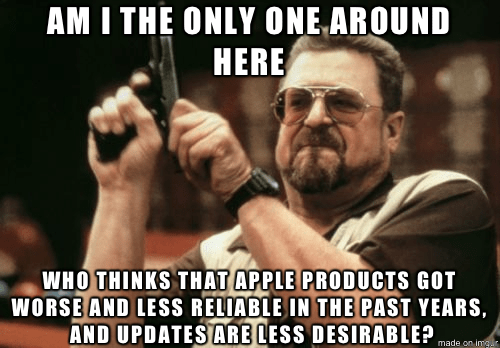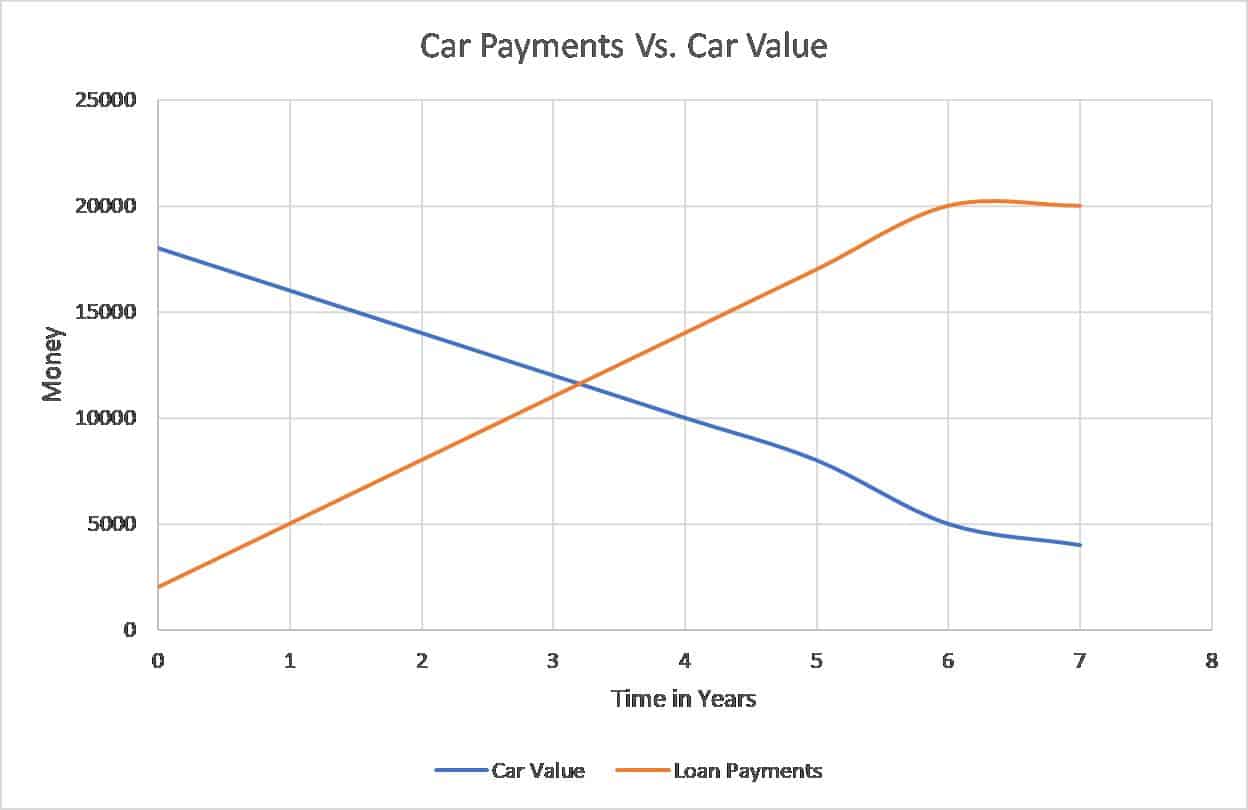Passive income has become a big topic now a days. As people become more busy and stressed, they are trying to search for alternate sources of income. Something they can earn passively. Making a living off dividends is one of the best ways to take part in investing and growing your wealth. Be warned this is not a get rich easy scheme.
Living off dividends passive income strategy requires you to put a lot of time and effort over a long term to be successful. I wanted to break down some myths about dividend investing with facts and explain how you can be successful in this strategy.
Let’s get started!
What is a Dividend?
When any public company makes a profit any year, it needs to decide what to do with its profit. This is usually called the question of capital allocation. A company can:
- Invest back in its business in R&D, in operations to grow more and make more profit next year.
- Invest in acquiring a new company and boost its return on invested capital.
- Return capital to shareholders in form of buying back stocks thereby boosting EPS(Earnings Per Share) or by giving dividends.
A company need not only do 1 or 2 of the above-mentioned things. They can employ all 3 strategies every year. That third point above is where dividend investing comes into picture. Dividend is essentially your share of profit in a company in which you own stock. When you purchase a stock of a company you are part owner in that company. You have the right to vote for the board of directors in the company. By voting them in, you expect them to make sensible decisions on the above 3 criteria. So, the executives in the company every year/quarter announce if they will have a dividend or not. They announce the following dates too which are important to know when investing in such stocks:
| Record Date | Date on which the broker will check to look who all own the stock that day to calculate how much dividend owner of stock on record will get. |
| Ex-Dividend Date | Once you buy a stock it takes couple of days for the transaction to settle and for you to be a shareholder in the company. So, this is the date before which you need to buy the stock in your brokerage, for you to show up as the owner of the said stock by record date. This is usually 1-3 days before record date. |
| Payment date | That’s the date on which you will get the payment of dividends in cash/stock in your account as per the company’s policy. Mostly its cash and you can re-invest it automatically or use it for buying other stocks. |
Why Dividends?
Dividends are actual income (Passive Income)
No doubt capital gains via price appreciation of a stock are good. However, you need to sell the stock to realize the gain. With dividends you get a part in the profits of the company without selling the stock. You can choose to reinvest it again to get more dividends next year. Over long term, you will see your dividends compound and you would see yourself living off dividend income alone. Again mind you this can easily take from 10-25 years depending on how much you invest every year. Nothing in life is easy and dividend investing needs time and effort on your side, but its definitely possible. I know a few people already living off dividends in retirement.
Dividends force executives to be more sensible
Importance of this cannot be understated. Sometimes management makes foolish decisions to acquire companies out of their circle of competence. They spend a lot of money and years down the line, we don’t see any returns at all. A lot of such acquisitions must be written off in balance sheet in form of goodwill impairment. Having a dividend policy forces the management to make more sensible/disciplined decisions. This leads to better returns for you as an owner in the company.
Risk Management from volatility
Dividend stocks are a way to lower the risks arising from volatility in daily/monthly/yearly stock movements. Since the owners of dividend stocks get their dividends as income every year, they are more open to not selling the stock in tough times and giving the company a chance to tackle problems at hand. Many companies that have an established dividend policy also have a large base of owners who are looking for those dividends to come in like clock work and they are more forgiving of the performance of the overall appreciation of stock.
Dividends taxed favorably
Dividends are taxed favorably under the current tax scheme. You pay lesser taxes for qualified dividends as compared to your taxes on income.
Dividends Drive overall Stock returns too!
There is a lot of data and analysis done that proves companies that pay dividends outperform companies that don’t pay dividends over long periods of time. Look at this chart below for a comparison between the index of dividend stocks vs non div paying stocks (courtesy Hartford Funds):

As you can see in the last 4-5 decades dividend growth stocks have outperformed the whole market. Check out some articles from Hartford Funds and Raymond James which go on to give way more data on how over the long term, dividend stocks outperform non dividend paying stocks.
Dividend Yield Investing vs Dividend Growth Investing
Dividend yield is basically ratio of total dividends given out per year by the price of the stock. For e.g. if AT&T (T) pays out 2.00$ every year and its current price is 31.62$ then the yield is 6.32%. So, it might make sense to buy the stocks yielding the highest to get more income. However, do not go chasing the yield. Usually stocks with 10-20% dividends are highly risky and prone to getting dividends cut soon. Dividend Yield Investing (DYI) focuses on having more income from your stocks. Usually people who are close to retiring and have a more conservative approach prefer dividend yield investing. Usually if you look at high yield companies they do not increase the dividends by huge amount every year. In case of AT&T its usually 1-2% per year.
Total Return= Dividend starting Yield (6.32%) + increase of 2% in dividend payout every year + capital appreciation
Meaning you get 6.32% return every year using dividends alone. I haven’t even included any stock price appreciation yet in the above calculation. Neither did i include dividend raises, nor did you sell any stocks to get this money in your pocket. See the magic of dividends?
People who are younger and have much more time to compound money usually should do Dividend Growth Investing(DGI). This is where you forgo the initial high dividend yield in favor of higher dividend increases every year. E.g. Starbucks (SBUX) yield of about 2.79% at price of 51.62$ as of 15-JUL 2018. However, if you notice the annual rate of increase of dividend over the last 5 years, its almost 20-25% annually!
Total Return = Dividend starting Yield (2.16%) + 20% increase in dividends every year + capital appreciation
Just as Einstein mentioned, compounding is the 8th wonder of world. Real magic happens if you re-invest these dividends to buy more of the same stocks. Since more stocks next year would result in even more dividends. This is where dividend growth investing also leaves dividend yield investing behind. If you continue to Dividend Re-Investment Program (DRIP) and reinvest dividends its easily possible you will have a much higher yield in 8-10 years for your DGI stock as compared to the DYI stock.
Let’s look at Starbucks and AT&T stocks as of 15th Jul 2018:

You can see the starting and ending yield on cost in these 2 investments above. Over time a DGI stock usually performs and returns way more money. However, it obviously comes with its risk. At&T has many years of history in successfully paying dividends. Starbucks has only 5-6 years of history paying dividends. But there are many indicators and fundamentals to look for when choosing such stocks.
Case against Dividend Investing
Dividend payout = Lower share price
This is true, every time a distribution gets paid out the price of the stock goes down by equivalent value on the payout date. People argue what’s the point of getting dividends. However, that’s just being very short term in thinking. If you plan on holding such stocks forever and you should, how should a short-term blip on payout date matter at all? Over the long term, company grows and so does the stock price!
Dividend paying companies grow less
Another argument is only companies that have stopped growing or have no use of cash, pay out dividends. Such companies cannot efficiently allocate capital and so choose to give out dividends. So capital appreciation on the stock gets hit. You won’t be able to make much off of capital gains on stock. However as mentioned earlier, good dividend stocks bought at correct price have great potential to provide above average returns.
Preferential tax treatment for dividends can change
This is a minor threat. Currently you pay less taxes on dividends as compared to short term capital gains on stock sales. However, nobody knows the future, and this can change at any time. When that happens, its possible such stocks can fall out of favor.
Dividend stocks make you miss out on fast growing industries
Usually most dividend stocks belong to consumer cyclical, consumer staples industries. Companies that have very stable fixed stream of income. Some financial companies etc. Argument is that tech stocks which grow the fastest usually never pay dividends. So, if you do not buy such stocks you are missing out on the best growing stocks in the market. However, there are big tech companies like Microsoft, Apple, Intel, Cisco etc. that pay dividends and increase them at a fast rate. Secondly, I never said to not have any non-dividend paying stock in your portfolio. Ideally you should have a balanced portfolio of stocks, bonds, REIT’s as mentioned in my earlier article on portfolio building.
Dividends are not guaranteed
This is true. In the recent past companies like Kinder Morgan Inc (KMI) and General Electric (GE) have cut their dividends. They were considered dividend stalwarts but fell into a lot of trouble and had no choice but to cut dividends. However, for such companies there were always signs. Things like payout ratio which was increasing, financial health was deteriorating, too much debt, not being shareholder friendly etc. But most of these signs were identifiable.
How much do you need for living off dividends?
There is no fixed answer to this question. You know how much you spend annually and how much you would need. For e.g., lets say you need about 45K annually in your retirement around age 60. Assuming you go on to live for another 30 years, you need about 1.3 million dollars (30*45000). Another way to think in terms of dividends is you need about a million dollar portfolio of dividend stocks to generate about 50K$ every year at 5% dividend yield. You will only be living off the dividends. Principal can still keep on growing at a healthy rate.
Also realize that its possible you do not even have to actually save a million dollars. You can just keep on investing money over 15-20 years & re-invest dividends. Your portfolio will keep on growing during that time, eventually reaching a million dollars. At that point you can simply stop investing stop re-investing and live off of dividend income. Here is a calculator that shows how starting with 0$, investing 12000$ annually with a dividend yield of about 4% and below avg price appreciation of 5% you can get to 1.4 million dollars in 30 years.

The above are just some numbers I plugged in. You can even do this 12K investment in your Roth account and your taxes will be 0! Feel free to play around on the calculator with different numbers, but living off dividends is definitely possible.
Best free resources to get you started with dividend investing
Dividend Condition(DIVCON) free ratings
This is a free rating system developed by the firm Reality Shares. They rank dividend stocks from highest (5) to lowest (1) depending on their probability of increasing dividends in next 12 months. They look at cash flow, future earnings, buybacks, dividend trends, etc. to come up with this rating. Although not iron clad, but its a good thing to check up on when deciding to buy a dividend stock. We have heard the saying safest dividend is the one that has just been raised. This tool allows you to find out stocks that most likely will raise it! Its also a good idea to look at their quarterly list of worst ranked (1) stocks which hints at possible divided cuts. This could allow you to highlight a stock in your portfolio and go deeper into it. Check more about them here.
Invest alongside the Superinvestors!
Its always good to have some extra information while investing. Sites like Insider Monkey, Whale Wisdom & DATAROMA allow you to see what the most famous super investors like Buffett, Munger, Bill Ruane (Sequoia Fund) etc. bought in the most recent quarter. Most of these websites have free signups which give you the most data you would ever need! I am not saying to blindly buy what Superinvestors are buying. But its always good to get more information. Do your own research, look at fundamentals and make your own decision.
Dividends stocks do come with some risk but with right precautions you can avoid the risky one’s and choose the best dividend paying stocks for your portfolio. I created a free guide for you to get started on your journey to living off dividends. I discuss some key ratios, fundamentals, some important resources to look at while deciding to buy a dividend stock. It will show you how to get free access to Morningstar and Value Line reports and how to look at them from dividend point of view. I discuss how you can read most financial news articles from Seeking Alpha, WSJ, Barrons for free even if they are behind paywall! Consider signing up below and get the free pdf version of the insights into dividend investing research and how to keep your dividend income safe.
Check out my complete dividend portfolio of stocks.
Create your own dividend tracking google sheet with graphs and pie charts.





 Humans are very emotional beings. Some of the most basic emotions humans have are desire, pleasure, happiness etc. We usually tend to forgo our long-term goals to fulfill our innate desire to get some need met quickly and without much hard work. Basically, our long-term goals usually involve lots of hardships, uncertainty, pain, endurance all of which makes our brain very uncomfortable. When we see something that we really like our brain forgoes all reasoning or logic. Our impulsive nature and emotions take control and it becomes difficult to stop ourselves from buying something or doing something that gives us instant gratification.
Humans are very emotional beings. Some of the most basic emotions humans have are desire, pleasure, happiness etc. We usually tend to forgo our long-term goals to fulfill our innate desire to get some need met quickly and without much hard work. Basically, our long-term goals usually involve lots of hardships, uncertainty, pain, endurance all of which makes our brain very uncomfortable. When we see something that we really like our brain forgoes all reasoning or logic. Our impulsive nature and emotions take control and it becomes difficult to stop ourselves from buying something or doing something that gives us instant gratification. ment. There is no waiting needed. You post something on FB or IG and you get instant replies and likes from your friends making you happy! Netflix allows you stream anything you want instantly! No waiting needed. You can binge the whole season in a day and you get your dinner delivered at home in 30 min.
ment. There is no waiting needed. You post something on FB or IG and you get instant replies and likes from your friends making you happy! Netflix allows you stream anything you want instantly! No waiting needed. You can binge the whole season in a day and you get your dinner delivered at home in 30 min.



 This book by Mr. Clason is a classic! Very old book set in very ancient times. Still teaches the most basic principles of finance. For e.g. how you should pay yourself first, spend less than you earn and invest the rest. How to make your money work for you and not the other way around. In a nutshell all what my blog is about and what I want it to be viewed as. This book teaches seven principles on how to live your financial life by and should be something that everyone should live by!
This book by Mr. Clason is a classic! Very old book set in very ancient times. Still teaches the most basic principles of finance. For e.g. how you should pay yourself first, spend less than you earn and invest the rest. How to make your money work for you and not the other way around. In a nutshell all what my blog is about and what I want it to be viewed as. This book teaches seven principles on how to live your financial life by and should be something that everyone should live by! It dismisses your preconceived ideas about famous millionaires you know from everyday news and media. This book shows some real-life studies conducted on millionaires and expands on the concepts discussed in the previous book by giving examples. It shows how your actual millionaires are just simple frugal people living in your neighborhoods who do not really show off their wealth. Live frugally, spend below their means, invest and have different sources of income. The book really makes it look easy to become a millionaire!
It dismisses your preconceived ideas about famous millionaires you know from everyday news and media. This book shows some real-life studies conducted on millionaires and expands on the concepts discussed in the previous book by giving examples. It shows how your actual millionaires are just simple frugal people living in your neighborhoods who do not really show off their wealth. Live frugally, spend below their means, invest and have different sources of income. The book really makes it look easy to become a millionaire! This goes onto explain in more detail how you can make your money work for you. It gives a simple explanation of why poor people spend more money on liabilities. How wealthy people keep adding to their assets and keep increasing their overall wealth. This book really changed my perspective on fancy cars, gadgets. I now usually think very carefully when making a big purchase. Take my time to realize weather I am really buying an asset that will help me grow or a liability that will cost me money.
This goes onto explain in more detail how you can make your money work for you. It gives a simple explanation of why poor people spend more money on liabilities. How wealthy people keep adding to their assets and keep increasing their overall wealth. This book really changed my perspective on fancy cars, gadgets. I now usually think very carefully when making a big purchase. Take my time to realize weather I am really buying an asset that will help me grow or a liability that will cost me money. This book really begins discussing more concepts on investing money in the market to make more money. Hopefully by this time you know about the basics of stock market. The book presents cold hard statistics to prove why investing in index funds is the simplest easiest way to go. I definitely agree with how index investing can keep you up with the market. It doesn’t really need a lot of research on picking these funds. You can setup an account with a broker and buy these funds and you are good to go!
This book really begins discussing more concepts on investing money in the market to make more money. Hopefully by this time you know about the basics of stock market. The book presents cold hard statistics to prove why investing in index funds is the simplest easiest way to go. I definitely agree with how index investing can keep you up with the market. It doesn’t really need a lot of research on picking these funds. You can setup an account with a broker and buy these funds and you are good to go! This book takes you from the crazy Tulip market madness in 1600’s to markets in 1960’s and even the dot com boom and bust. This discusses the technical and fundamental analysis people usually do before buying a stock, their advantages and disadvantages. It also guides you on your portfolio allocation strategies according to your age. Also introduces you to concepts in market like Beta, 401k’s, IRA’s etc. It gives you generic personal finance advice. This is obviously power packed with a lot of useful info!
This book takes you from the crazy Tulip market madness in 1600’s to markets in 1960’s and even the dot com boom and bust. This discusses the technical and fundamental analysis people usually do before buying a stock, their advantages and disadvantages. It also guides you on your portfolio allocation strategies according to your age. Also introduces you to concepts in market like Beta, 401k’s, IRA’s etc. It gives you generic personal finance advice. This is obviously power packed with a lot of useful info! Peter Lynch was able to achieve 29% annual returns for more than a decade and he shares how he was able to do so in very simple terms. There is not much technical jargon in this book. Even then it does an excellent job of guiding you to make individual stock purchases. Primarily based on observing the surroundings around you. Looking at insider buying activity, observing small things occurring in your neighborhood. Using your expertise in your industry to identify future winners!
Peter Lynch was able to achieve 29% annual returns for more than a decade and he shares how he was able to do so in very simple terms. There is not much technical jargon in this book. Even then it does an excellent job of guiding you to make individual stock purchases. Primarily based on observing the surroundings around you. Looking at insider buying activity, observing small things occurring in your neighborhood. Using your expertise in your industry to identify future winners! This book goes into details of how to pick individual stocks in a very specific dividend paying stocks category! It explains how dividend paying stocks are usually the most robust and high performing stocks. Shows they how have outperformed non-dividend paying stocks historically. It also explains what attributes of a stock to look at when deciding whether to buy it or not. It also mentions some pitfalls to avoid when looking at such stocks. This is my favorite strategy and I use it to buy individual stocks outside of index funds.
This book goes into details of how to pick individual stocks in a very specific dividend paying stocks category! It explains how dividend paying stocks are usually the most robust and high performing stocks. Shows they how have outperformed non-dividend paying stocks historically. It also explains what attributes of a stock to look at when deciding whether to buy it or not. It also mentions some pitfalls to avoid when looking at such stocks. This is my favorite strategy and I use it to buy individual stocks outside of index funds. Guy Spier is a value investor which is another strategy some people use in the stock market to find under values depressed stocks. However, his book discusses not about his strategy but his journey in the markets. How he started as a ruthless Gordon Gekko style investor and later changed after meeting visionary like Warren Buffet. How his idea about not just stocks but also life changed significantly for the better. It’s just a very interesting story. Guy throws some valuable tips on investing and how to have a positive attitude on life!
Guy Spier is a value investor which is another strategy some people use in the stock market to find under values depressed stocks. However, his book discusses not about his strategy but his journey in the markets. How he started as a ruthless Gordon Gekko style investor and later changed after meeting visionary like Warren Buffet. How his idea about not just stocks but also life changed significantly for the better. It’s just a very interesting story. Guy throws some valuable tips on investing and how to have a positive attitude on life! This book is like a summation of everything you have read so far from my list! Title might make you think its about investing in stock market. But you would be surprised to read about lots of awesome tips on saving money everyday. Some really efficient tax strategies! He also discusses tips in the stock markets. Then goes on to discuss how you can talk to your kids about money. How to make sure they end up in a position better than you! I feel this book is really the pinnacle of all you have learnt so far.
This book is like a summation of everything you have read so far from my list! Title might make you think its about investing in stock market. But you would be surprised to read about lots of awesome tips on saving money everyday. Some really efficient tax strategies! He also discusses tips in the stock markets. Then goes on to discuss how you can talk to your kids about money. How to make sure they end up in a position better than you! I feel this book is really the pinnacle of all you have learnt so far.
